Follow Scott
Recent Tweets
- Waiting for Twitter... Once Twitter is ready they will display my Tweets again.
Latest Photos
Search
Tags
anniversary Balticon birthdays Bryan Voltaggio Capclave comics Cons context-free comic book panel conventions DC Comics dreams Eating the Fantastic food garden horror Irene Vartanoff Len Wein Man v. Food Marie Severin Marvel Comics My Father my writing Nebula Awards Next restaurant obituaries old magazines Paris Review Readercon rejection slips San Diego Comic-Con Scarecrow science fiction Science Fiction Age Sharon Moody Stan Lee Stoker Awards StokerCon Superman ukulele Video Why Not Say What Happened Worldcon World Fantasy Convention World Horror Convention zombies
©2025 Scott Edelman
What a 1972 romance story tells us about Stan Lee and the Marvel Method
Posted by: Scott
Tags:
Marvel Comics, romance, Ross Andru, Stan Lee
Posted date:
February 23, 2021 |
2 Comments
Reading what my old boss Roy Thomas had to say today over at The Hollywood Reporter about Stan Lee and what’s come to be known as the Marvel Method reminded me I own a few things which I feel shed a small amount of light on the collaborative nature of creating comics when there’s no full script prior to the art —
Stan’s typed plot for a romance story intended to be titled “But One of Us Must Lose!”
Ross Andru’s pencils turning that plot into seven pages of art.
And then the published story, as inked by Jack Abel, which appeared in Our Love Story #17 (June 1972) under the title “When Love is Lost!”
Since so few plots remain from that period, and even if they do, the accompanying pencil art has rarely survived, I thought something could be gained from a comparison of Stan’s plot to Ross’s art to Stan’s final dialogue.
I won’t share all of Ross’s pencil art here, both because what I most want to point out is the altered ending … and because my scanner isn’t large enough to capture full pages of ’70s-era original art. Maybe someday I’ll share it all, but for now, here’s what I think matters.
First, Stan’s plot —
Though I’m fascinated by Stan’s direction to Ross that he should — “Always make sure most of the panels in a romance story show the heroine looking sad rather than happy. For some reason, girl readers want to read about people with PROBLEMS, not happy-looking people.” — that’s not the part that speaks most to the collaborative process. For that, I direct your attention to the ending.
As you can see, Ross drew the final sequence pretty much the way Stan asked him to — the woman who thinks English Literature pointless loses the guy she thinks she loves to her friend who digs books as much as he does.
But there’s something different about the ending as published — something which didn’t exist in either Stan’s original plot or the notes Ross scribbled in the margins of his art (a thing all artists did back then to guide the scripter through their pencil art) —
It’s revealed that the guy she loves had been dating her while on a deliberate break from her friend, one intended to make sure he really loved her. It made the ending a bit more complex as far as ’70s-era romance comics went. And I have to believe that the idea for the twist only occurred to Stan as he sat there with the pencils in hand and began placing dialogue. And also — that such a spark wasn’t an isolated incident.
That’s a part of the collaborative nature of the Marvel Method which some people tend to overlook — aspects get added to the story which existed neither in the original plot nor the pencil art, but only when the writer is inspired while writing the connective tissue of the story.
This won’t answer the question of who truly created the Fantastic Four — a subject which Roy addresses in his The Hollywood Reporter piece — but I think it’s a piece of the puzzle which you need to know and understand.
Here’s the entire story as published so you can further compare Stan’s original plot to what we read in 1972 —
2 Comments for What a 1972 romance story tells us about Stan Lee and the Marvel Method
dusty miller
Of course the real significance of this script, is that it came BEFORE the liner notes. Although I still tend to believe Kirby came up with the bulk of the plotting for his stories that contain liner notes, it can longer be said that is a fact. Sadly, Lee fanatics will jump on this and Kirby fanatics will denigrate this, But, it is an important addition to serious research into the matter.

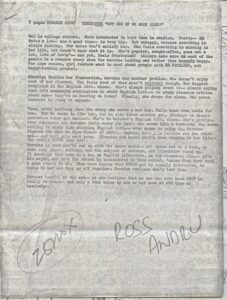
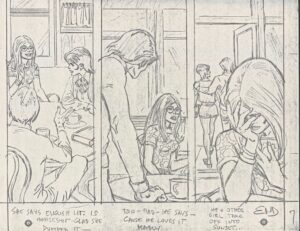


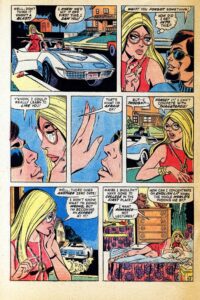
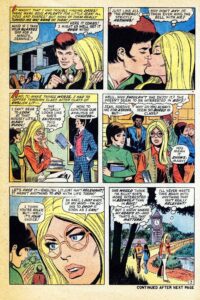
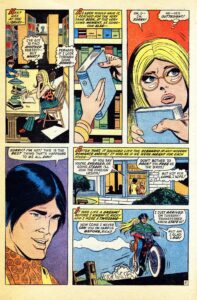
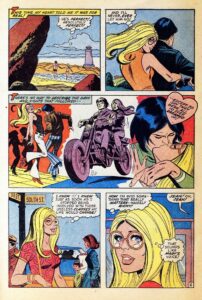
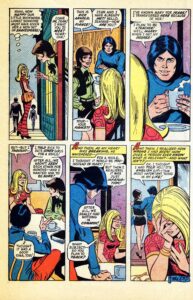
Robert Beerbohm
Thank you for sharing this. The first Lee “script” I have seen. I do not count FF 1 and 8. We also gotta remember Ross Andru with his ex-partner Mike Esposito were self publishing as MikeRoss comics in 1954. Caught up in being distributed as S&K’s Mainline was by Leader News. Ross as Mike as Joe as Jack already knew what would sell in making these comics stories. Stan turning this ending into a personal thing going on in his life (daughter) is intriguing. Such working methods run the gamut of the sausage making 🙂